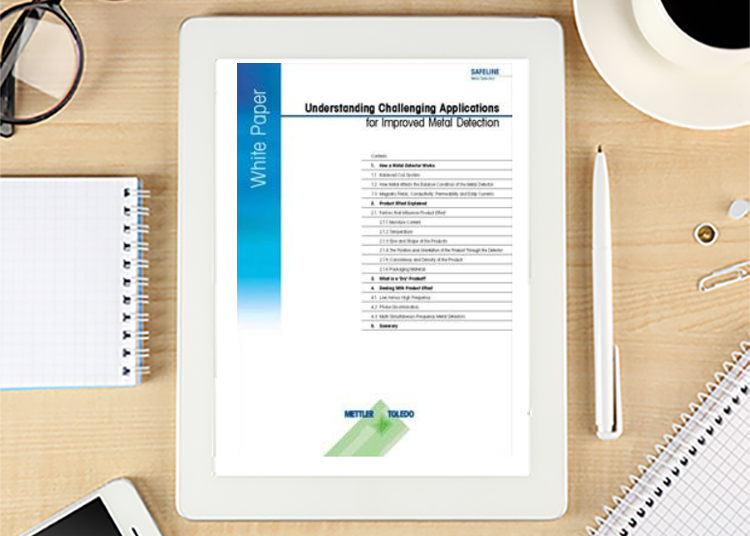Whitepaper: Improving metal detection in challenging food applications
- Like
- Digg
- Del
- Tumblr
- VKontakte
- Buffer
- Love This
- Odnoklassniki
- Meneame
- Blogger
- Amazon
- Yahoo Mail
- Gmail
- AOL
- Newsvine
- HackerNews
- Evernote
- MySpace
- Mail.ru
- Viadeo
- Line
- Comments
- Yummly
- SMS
- Viber
- Telegram
- Subscribe
- Skype
- Facebook Messenger
- Kakao
- LiveJournal
- Yammer
- Edgar
- Fintel
- Mix
- Instapaper
- Copy Link
Posted: 14 June 2022 | Mettler-Toledo Product Inspection | No comments yet
Metal detection in food can be challenging as certain product characteristics can disturb the magnetic field, find out how to minimise its impact.
Metal detectors are installed on most of the world’s food production lines and provide a highly reliable and relatively low-cost solution to ensure metal free product reaches the consumer and supports the user’s desire for maximum brand protection. Metal detectors work by creating a magnetic field that the presence of metal contaminants disturbs, leading to their detection. However, in many situations the characteristics of the products themselves can disturb the magnetic field.
Known as “Product Effect” it can impact the detection levels of metal contaminants within the product itself. Mettler-Toledo’s Mike Bradley, Metal Detection Systems Product Inspection Specialist explains that Product Effect is more complicated than many food manufacturers realise and explains what the suppliers of Metal Detections systems are doing to minimise its impact.
Product Effect is not considered by many food manufacturers. If left unchecked it can lead to good, contaminant free products being incorrectly rejected by metal detection systems. But, more importantly, it can also lead to actual contaminated products not being identified, and potentially reaching the consumer.
Many food manufacturers understand Product Effect in simple terms:
- “Wet” products with a high moisture or salt content have a strong Product Effect;
- “Dry” products, such as bags of flour, are not considered to have a strong Product Effect.
It might be broadly true, but other factors – the type of packaging used, the orientation the product travels down the production line, the temperature of the product – can also be contributing factors to the “Product Effect”, and negatively affect the detection of metal contaminants. These factors are generally much less well understood in the market.
So, what is Product Effect, what causes it, and how can it be mitigated against? To begin with, we must quickly look at how a metal detector works.
Metal detectors typically have a coil arrangement with a transmitter coil loop running parallel with and between two receiver coil loops. The transmitter coil is energized with a high frequency current that generates a magnetic field, which in turn produces electrical signals in the receiver coils. These are connected in opposition to each other, so the resultant signal is close to zero. This state is referred to as balanced, and such metal detectors are therefore known as “balanced coil” metal detectors. When a metal particle or anything that is magnetic or electrically conductive passes through the coil arrangement it interferes with the magnetic field, causing a signal to be detected by the receiver coils, which is evaluated by the metal detector to confirm that metal is present.
It is this possibility of interference by substances that are magnetic or electrically conductive, but not necessarily metal, that gives rise to Product Effect, thereby complicating the detection of metal contaminants in product inspection.
The following factors can all cause Product Effect, and should be kept in mind when using metal detection in product inspection:
- Moisture or salt content
- Temperature
- Size and shape of the product
- Position and orientation of the product through the detector
- Consistency and density of the product
- Packaging material
To find out how these factors affect metal detection sensitivity and how to mitigate Product Effect, click here.
Related content from this organisation
- Application note: Mettler-Toledo automates 360-degree label inspection
- Webinar: Discover how you can combat rising manufacturing costs
- Guide: How to choose the right product inspection solution
- Whitepaper: Find out how you can detect hard-to-find contaminants
- How metal detection protects productivity and your brand










